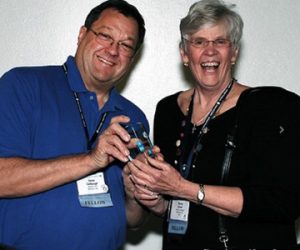Can we use 4 cm paraffin wax block (60 cm x 60 cm) for neutron shielding of a door to a room with a Varian high energy Linac IX since we do not have access to boards made of polyethylene with boron? We would layer it so the layering would be 6 cm paraffin wax then 8 cm lead then the 4 cm paraffin wax block followed by another 2 cm of lead. The 6 cm of paraffin would start on the maze side of the door ending with the 2 cm of lead on the control room side of the same door.
Yes, you can use paraffin wax instead of borated polyethylene. Capture of thermal neutrons on hydrogen produces 2.225 MeV gamma rays, but you have sufficient lead shielding to attenuate them by several orders of magnitude. The arrangement of the shielding material that you have proposed for the door is also fine.
I should state the obvious as well. Paraffin wax melts at 37 degrees centigrade. You should pack the layers in leak tight metal containers. You should also make sure there are no voids between the wax blocks. The wax blocks will slowly flow under gravity and fill the voids between the blocks. If there were any voids, you end up with a void on top of the container which would constitute a weakness in the shielding.
The advantage of using borated polyethylene or borate paraffin, is that about 20% of the natural boron is 10B, which has several orders of magnitude higher cross section for the capture of thermal neutrons than hydrogen, which can reduce the overall thickness of the shielding. The second advantage is that the process of thermal neutron capture on boron will produce a 0.478 MeV which would need less lead for attenuation. If you are interested, boric acid is relatively cheap and there are several ways to add boric acid to paraffin.
Kamran Vaziri, PhD
Answer posted on 10 July 2018. The information posted on this web page is intended as general reference information only. Specific facts and circumstances may affect the applicability of concepts, materials, and information described herein. The information provided is not a substitute for professional advice and should not be relied upon in the absence of such professional advice. To the best of our knowledge, answers are correct at the time they are posted. Be advised that over time, requirements could change, new data could be made available, and Internet links could change, affecting the correctness of the answers. Answers are the professional opinions of the expert responding to each question; they do not necessarily represent the position of the Health Physics Society.






